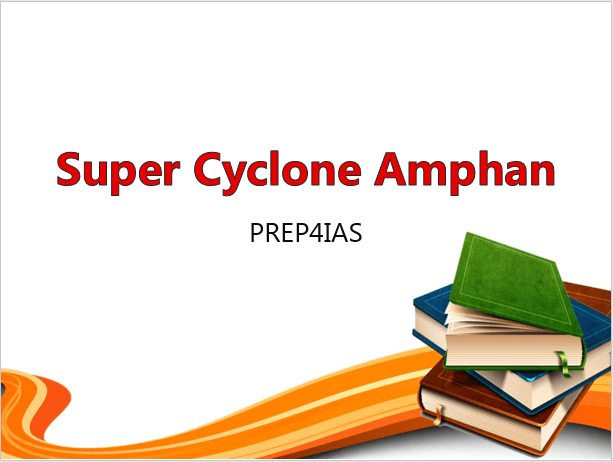In this article, We will go through important facts on Super Cyclone Amphan. Super Cyclone formations are very rare in the Indian Ocean region but you might have observed a very frequent formation of Cyclones in tropical latitudes. This is one of that rarest super cyclone formed in the Bay of Bengal Area and currently moving towards North Western Region at a speed of 200-240 kmph. We will try to understand few of the concepts and facts about Cyclones and Its formation.
What is Super Cyclone Amphan ?
It is a tropical Cyclone formed over the Bay of Bengal region. The name Amphan is given by the Country Thailand.
What is Cyclone ?
Cyclone is a large scale of mass that rotates around the Centre of low atmospheric pressure. It is characterized by strong winds, thunderstorms and heavy rainfall. When a storm develops over the Indian ocean, it is referred to as tropical cyclones or severe cyclonic storms.
What are different types of Cyclones ?
There are basically two types of Cyclones:-
- Temperate Cyclones : It is also known as mid latitude or extratropical Cyclones usually occurs in mid latitude.
- Tropical Cyclones : It usually occurs in tropical latitudes.
What is Super Cyclone ?
A tropical Cyclone with wind speed higher than 222 kmph at the center of the low pressure region is known as Super Cyclone.
Which of the Regions are affected ?
This super cyclone are expected to make a landfall on parts of Odisha and West Bengal in India. Some impact are also expected in the region of Sikkim, Assam and Meghalaya.
How many countries are involved in the naming of Tropical Cyclones ?
The group that has 13 member countries, including Bangladesh, India, Iran, Maldives, Myanmar, Oman, Pakistan, Qatar, Saudi Arabia, Sri Lanka, Thailand, the United Arab Emirates and Yemen, names cyclones in the region.
Who provides name to the Tropical Cyclones ?
Cyclones that form in every basin around the world are named by Tropical Cyclone Warning Centres (TCWCs) and Regional Specialised Meteorological Centres (RSMCs). There are a total of five TCWCs in the world and six RSMCs, including the India Meteorological Department (IMD).
The World Meteorological Organisation/United Nations Economic and Social Commission for Asia and the Pacific (WMO/ESCAP) panel on Tropical Cyclones at its twenty-seventh session held in 2000 in Muscat, Sultanate of Oman, agreed in to assign names to the tropical cyclones in the Bay of Bengal and the Arabian Sea.
After Amphan, the names to be used will be taken from the new list, starting with Nisarga (suggested by Bangladesh), Gati (named by India), Nivar (Iran), and so forth.
What is the Criteria for Cyclone Formation ?
Below are the criteria required to form a Cyclone:-
- Surface Temperature of Ocean should be more than 26°C up to a depth of 60m.
- It develops in the Inter Tropical Convergence Zone(ITCZ).
- There should be continuous supply of warm and moist air.
- There should be an anti cyclonic air formation at the height of 9-16 km to suck the air.
How Cyclone Forms ?
Below are the mechanism to form a Cyclone:-
- Cyclone formation is more prevalent in the month of April-May and Oct-Dec.
- Increased Oceanic Surface temperature increases the rate of Evaporation at the tropical latitudes.
- As a result hot air lift upwards and create a low pressure zone.
- This low pressure zone attracts winds from surrounding regions.
- Wind direction will be from East to west in the Norther hemisphere and west to east in Southern hemisphere.
- Winds moving towards low pressure zone gets deflected in the rightward direction due to Coriolis Effect.
- This creates a anticlockwise movement of air which started sucking the air from surface.
- This process further intensifies the low pressure zone and hence forms into intense Cyclone.
Popular Recommendations:-
Famous National Parks in India | 52 Best Questions and Answers for all Exams
Super Cyclone Amphan and Its Threats

